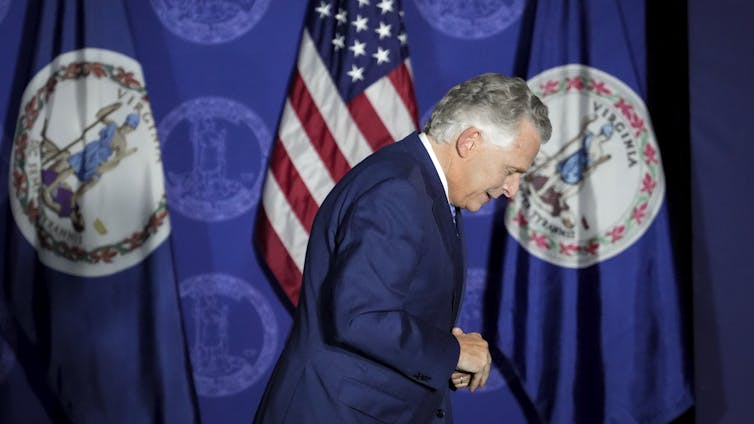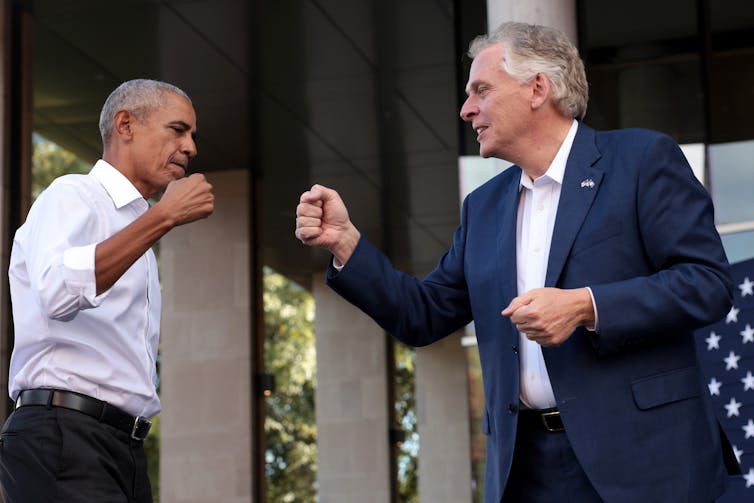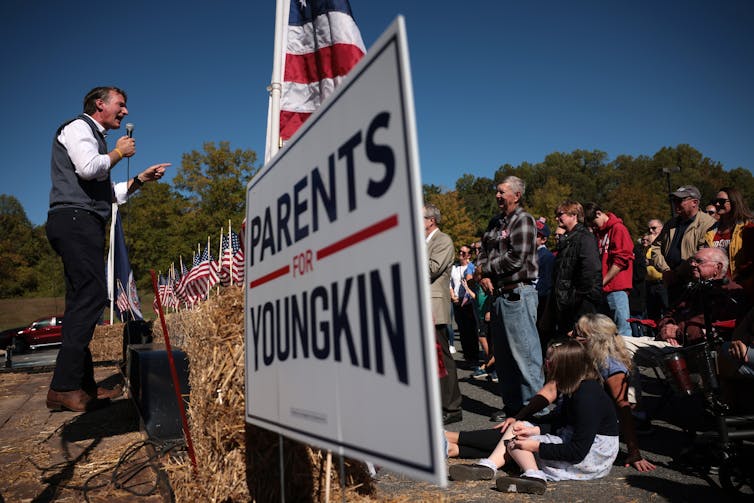French outrage over US submarine deal will not sink a longstanding alliance

France’s recent recall of its ambassador to the United States was an exceptional move in the long history of France-U.S. relations, which began with the 1778 treaties that created a military and commercial alliance between the two countries.
In France, President Joe Biden’s Sept. 15, 2021 announcement of a new trilateral security partnership between the U.S., Australia and Great Britain was met with disbelief and outrage.
The alliance, which enables Australia to acquire U.S. nuclear-powered submarine technology, voids a US$66 billion submarine deal Australia signed with France in 2016.
Beyond the financial implications his country will face after Australia’s change of mind, French Foreign Minister Jean-Yves Le Drian accused the U.S. and its partners of “lying, duplicity, a major breach of trust and contempt.”
A Sept. 22 telephone conversation between Biden and French President Emmanuel Macron helped sketch a path toward reconciliation. The two leaders agreed on in-depth consultations on matters of strategic interest, to be followed by a meeting in Europe at the end of October. Yet Le Drian acknowledged that resolving the crisis “would take time and require actions.”
But despite French outrage over the deal, there is little chance of irreparable damage between the two countries. If anything, the current diplomatic crisis highlights a cycle of conflict and rapprochement that, as my research shows, has been characteristic of U.S.-France relations since the very beginning.
High expectations between the U.S. and a country that is often described as its “oldest ally” have often led to diplomatic misunderstandings and quarrels in the past.
‘Perfidy,’ privateers and protests
Less than 20 years after French and American soldiers fought side by side against the British on the battlefields of Brandywine and Yorktown, the two nations were at odds over the Jay Treaty of 1794, which restored economic relations between the U.S. and Great Britain.
France considered the treaty a betrayal by America. In a note that echoes minister Le Drian’s recent grievances, the governing five-member French Directorate complained that “The government of the United States has added the full measure of perfidy towards the French Republic, its most faithful ally.”
France consequently allowed its privateers to seize U.S. merchant ships, inflicting considerable injury to American commerce.
In the U.S., protests erupted in Philadelphia demanding war with France. And Congress soon passed legislation to fund a naval force, as well as the Alien and Sedition Acts of 1798, which increased the residency requirement for American citizenship from five to 14 years, allowed the deportation of foreigners who were considered dangerous and restricted speech critical of the government.
The undeclared naval war that followed, later known as the “Quasi-War,” continued until the 1800 Treaty of Mortefontaine, which reestablished more friendly relations between the two countries. During the hostilities, France seized over 2,000 American ships along the Atlantic coast and in the West Indies.
US ill will
The two nations again barely avoided war during the 1852-1870 reign of Napoleon III.
In 1862, the French emperor attempted to establish a puppet regime in Mexico and installed Maximilian of Habsburg as emperor of Mexico.
For Napoleon III, this Catholic and Latin monarchy would counter the influence of the Protestant and republican U.S. in the New World.
The U.S. considered the move a violation of the Monroe Doctrine, the foreign policy established in 1823 by President James Monroe which stated that any European interference in the Western Hemisphere would be viewed as a hostile act against the U.S.

Although the U.S. could not retaliate directly during the Civil War, fearing France would side with the Confederacy, Secretary of State William Henry Seward repeatedly warned the French that their interference in Mexico would lead to grave consequences.
By 1865, with the Civil War over, talk of a Franco-American war became widespread after President Andrew Johnson sent General John M. Schofield to Paris to warn the French that time was running out before the U.S. would resort to military intervention to expel Napoleon III’s forces from Mexico.
Although Napoleon III finally agreed to withdraw his troops, this Mexican intervention earned France much ill will in the U.S.
Its effects would be felt during the 1870 Franco-Prussian War, when despite the U.S. government’s neutral position, American public opinion clearly favored the Germans over the French.
20th-century tension
Diplomatic crises between the U.S. and France recurred throughout the 20th century.
According to U.S. diplomat George Vest, President Charles de Gaulle’s decision to withdraw France from NATO’s integrated military command in 1966 prompted former Secretary of State Dean Acheson and other foreign policy advisors to “figure every single way to throw the book back at France, put our relations to the minimum, retaliate in every punitive way we could.”
In the end, however, President Lyndon B. Johnson responded by telling de Gaulle that the U.S. was determined to join with other NATO members in preserving the deterrent system of the alliance.
In 1986, relations again soured after President François Mitterrand refused to let American bomber planes fly through French airspace on their way to strike military targets in Libya. Anti-French demonstrations followed in several U.S. cities. Crowds poured Bordeaux wine down the gutter and burned French products in bonfires.
Another crisis followed France’s refusal to support the U.S invasion of Iraq in 2003. American officials’ anger and desire to “punish France” was accompanied by a media campaign against the French “cheese-eating surrender monkeys.”
The diplomatic confrontation left very serious strains, which were not fully resolved until 2005, when bilateral relations resumed a more normal course.
In all these instances, as in today’s crisis, reactions on both sides went beyond the realm of politics: The language of passion replaced the more neutral discourse of diplomacy.
This passionate turn is the result of the mythology that surrounds France’s vision of itself as the “oldest ally” of the U.S. and of America’s idealistic vision of itself as France’s sole savior during World War I and World War II.
This mythology that whatever happens, France and the U.S. should always be on the same side – politically, economically and diplomatically – hinders more realistic relations between the two countries.
Going beyond the “oldest ally” rhetoric could allow both countries to take a more productive look at the true nature of their relations: those of two democratic nations whose interests sometimes coincide, sometimes diverge in the complex world of 21st-century international relations.![]()
Hervé-Thomas Campangne, Professor of French Studies, University of Maryland
This article is republished from The Conversation under a Creative Commons license. Read the original article.


